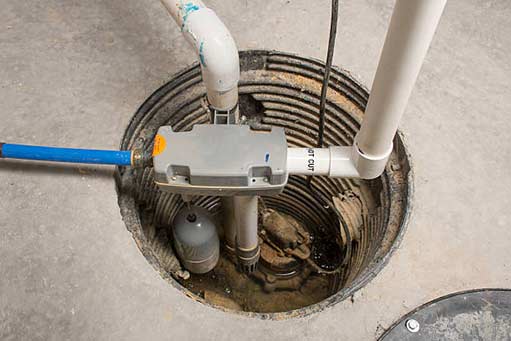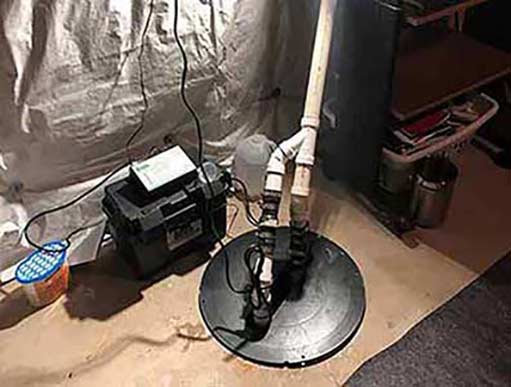
Sump pumps play a crucial role in protecting basements and crawl spaces from flooding and water damage. However, like any mechanical device, they can encounter issues that require your attention and prompt action. In this article, we will explore some of the most common problems that homeowners may face with their sump pump systems and provide practical solutions to address them. Whether you are a seasoned homeowner or a first-time sump pump user, this guide will equip you with the knowledge you need to keep your basement dry and water-free.
Understanding Sump Pumps
Before we delve into the problems and solutions, let’s take a moment to understand the basic functioning of a sump pump. A sump pump is a device that sits in a sump pit, typically located in the basement or crawl space. Its primary function is to remove excess water from the pit and redirect it away from the foundation of your home. This prevents water accumulation and potential flooding.
Sump pumps are typically powered by electricity and are activated automatically when water in the sump pit reaches a certain level. They are equipped with a float switch that triggers the pump to turn on, pumping the water out through a discharge pipe and away from your home.
Problem 1: Sump Pump Failure to Activate
One common problem that homeowners may experience is a sump pump failing to activate when it should. This can leave your basement vulnerable to flooding in the event of heavy rainfall or a sudden water leak. There are several potential causes for this issue.
The first thing to check is the float switch. Make sure it is free from debris, properly adjusted, and moves freely. If the float switch is obstructed or stuck, it may not activate the pump when needed. Clean the switch and ensure it moves smoothly.
Another possible cause is a faulty or malfunctioning pump switch. Over time, the switch can wear out or become damaged, resulting in a failure to activate. If you suspect this is the issue, you may need to replace the pump switch to restore proper functionality.
In some cases, a power outage or tripped circuit breaker may be responsible for the sump pump not activating. Check the power source to ensure it is functioning correctly and consider installing a battery backup system to prevent flooding during power outages.
Problem 2: Sump Pump Motor Running Continuously
If your sump pump motor runs continuously without cycling on and off, it can indicate a problem with the pump’s operation. This issue can lead to excessive wear and tear on the motor, decreasing its lifespan and potentially causing a complete failure.
A common reason for a continuously running motor is a faulty or stuck pump switch. As mentioned earlier, the pump switch is responsible for activating and deactivating the sump pump. If the switch gets stuck in the “on” position, the motor will continue to run even when the water level in the sump pit is low.
To resolve this problem, you will need to inspect the pump switch and ensure it is functioning correctly. If it is stuck, try gently tapping it to see if it frees up. If the switch is damaged or worn out, it may need to be replaced.
Another possible cause of a continuously running motor is a clogged or obstructed discharge pipe. When the discharge pipe becomes blocked, the water cannot flow out of the sump pit, causing the motor to run continuously. Check the discharge pipe for any obstructions and remove them if necessary.

In some cases, a power outage or tripped circuit breaker may be responsible for the sump pump not activating. Check the power source to ensure it is functioning correctly and consider installing a battery backup system to prevent flooding during power outages.
Problem 3: Sump Pump Overflowing
A sump pump that overflows is a serious issue that requires immediate attention. This problem can lead to significant water damage in your basement or crawl space and compromise the structural integrity of your home. Several factors can contribute to a sump pump overflowing.
The most common cause is a malfunctioning or overwhelmed float switch. If the float switch fails to activate the pump when the water level in the sump pit rises, it will eventually overflow. Make sure the float switch is clear of any debris and moves freely. If it is damaged or not functioning correctly, consider replacing it.
Another possible reason for an overflowing sump pump is a blocked or clogged discharge pipe. Debris, dirt, and other materials can accumulate in the discharge pipe over time, hindering the water’s flow. Regularly inspect and clean the discharge pipe to prevent blockages.
In some cases, the sump pump may not be adequately sized for the amount of water it needs to handle. If you consistently experience overflowing, it might be worth considering upgrading to a larger sump pump to ensure it can effectively manage the water volume.
Problem 4: Unusual Noises Coming from the Sump Pump
If you notice strange or unusual noises coming from your sump pump, it is essential to investigate the issue promptly. Unusual noises can indicate underlying problems that, if left unaddressed, may lead to more significant damage.
One common cause of unusual noises is a worn-out or damaged motor. As the motor ages, its internal components can deteriorate, resulting in grinding, rattling, or screeching sounds. If you suspect a faulty motor, it is best to contact a licensed plumber to assess the situation and recommend the appropriate course of action.
Another potential reason for unusual noises is a loose or misaligned impeller. The impeller is responsible for pumping the water out of the sump pit, and if it becomes loose or misaligned, it can cause vibrations or knocking sounds. In this case, you may need to realign or tighten the impeller to eliminate the noise.
Additionally, excessive debris or sediment in the sump pit can lead to noise issues. The debris can cause the impeller to become unbalanced and produce loud, disruptive noises. Regularly clean the pump and sump pit and remove any debris to prevent this problem.
By understanding the common problems associated with sump pumps and their possible solutions, you can effectively maintain and troubleshoot your system. Remember to perform regular maintenance, such as cleaning the sump pit and inspecting the float switch, to prevent issues from arising. If you encounter a problem that you are unable to resolve or if you are unsure about any aspect of your sump pump system, it is always recommended to seek professional assistance. With proper care and attention, your sump pump will continue to protect your basement or crawl space from potential water damage for years to come.